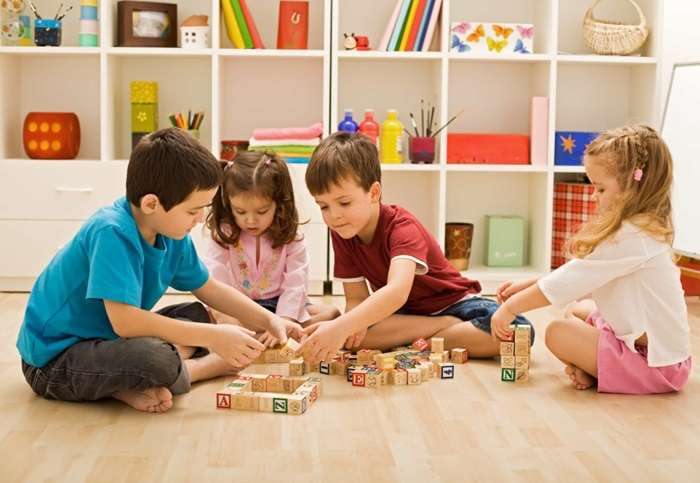School doesn’t always have to be about textbooks and lectures. Injecting some fun into the classroom can not only make learning more enjoyable but also foster a stronger sense of community among students. Whether you’re a teacher looking for creative ways to energize your class or a student eager for some playful classroom activities, this guide covers a variety of games that can be adapted for different age groups and settings. From team-building exercises to brain-teasers, here are some fantastic games to play at school that are guaranteed to bring smiles and engagement to the classroom.
The Power of Play in Education

Before diving into specific games, it’s important to understand why play is such a valuable component of the educational experience. Games not only provide a mental break from traditional learning but also support social development, improve problem-solving skills, and enhance creativity. They create an environment where students feel more relaxed and willing to participate, ultimately leading to better retention of information and stronger interpersonal relationships.
Classic Classroom Games
1. Simon Says
Overview: A classic game that’s perfect for younger students, Simon Says helps develop listening skills and follow directions.
How to Play:
- One person (Simon) gives commands to the group.
- If the command starts with “Simon says,” players must follow it.
- If Simon does not say “Simon says” before the command, players should not follow it.
- Players who make a mistake are out.
Educational Benefits: This game helps with listening skills and attention to detail.
2. Charades
Overview: A fun and active game where students act out words or phrases without speaking, and others guess what they are.
How to Play:
- Divide the class into two teams.
- One team selects a word or phrase for the other team to guess and acts it out.
- Set a timer for each round (e.g., one minute).
- The team with the most correct guesses wins.
Educational Benefits: Charades boosts creativity, encourages teamwork, and improves communication skills.
3. Hangman
Overview: A word-guessing game that challenges students’ spelling and vocabulary skills.
How to Play:
- One player thinks of a word and writes down underscores for each letter.
- Other players guess letters one at a time.
- For each incorrect guess, a part of a stick figure is drawn.
- The game ends when the word is guessed or the stick figure is fully drawn.
Educational Benefits: Enhances spelling, vocabulary, and deductive reasoning skills.
Team-Building Activities
1. Scavenger Hunt
Overview: A dynamic game that encourages problem-solving and teamwork.
How to Play:
- Create a list of items or clues related to the classroom or school.
- Divide the students into teams and give each team a list.
- Set a time limit for finding the items or solving the clues.
- The team that finds the most items or solves the most clues wins.
Educational Benefits: Promotes teamwork, problem-solving, and critical thinking.
2. Human Knot
Overview: A physical and interactive game that requires students to work together to untangle themselves.
How to Play:
- Students stand in a circle and each person grabs hands with two other people across from them.
- The group must then work together to untangle themselves without letting go of hands.
Educational Benefits: Encourages teamwork, communication, and problem-solving.
3. Escape Room Challenges
Overview: A classroom adaptation of popular escape room games that challenge students to solve puzzles to “escape” or solve a mystery.
How to Play:
- Set up a series of puzzles and clues around the classroom.
- Divide students into teams and give them a set amount of time to solve the puzzles.
- Each puzzle solved leads to the next clue.
Educational Benefits: Enhances problem-solving, teamwork, and critical thinking skills.
Brain-Boosting Games
1. Jeopardy
Overview: A trivia-based game that reinforces knowledge on various subjects.
How to Play:
- Create a Jeopardy-style board with categories and questions of varying difficulty.
- Divide the class into teams.
- Teams choose a category and answer the question for points.
- The team with the most points at the end wins.
Educational Benefits: Reinforces knowledge, encourages quick thinking, and enhances learning in a fun way.
2. 20 Questions
Overview: A guessing game where students try to identify an object, person, or place by asking yes/no questions.
How to Play:
- One student thinks of an object, person, or place.
- The other students take turns asking yes/no questions to guess what it is.
- They have up to 20 questions to figure it out.
Educational Benefits: Encourages deductive reasoning and critical thinking.
3. Pictionary
Overview: A drawing and guessing game that enhances creativity and communication skills.
How to Play:
- Divide the class into teams.
- One team member draws a word or phrase while their team guesses what it is.
- Set a timer for each round.
Educational Benefits: Boosts creativity, teamwork, and non-verbal communication skills.
Interactive and Technology-Based Games

1. Kahoot!
Overview: An online quiz platform that turns learning into a competitive and engaging game.
How to Play:
- Create or choose a quiz on Kahoot!
- Students join the quiz using their devices.
- Questions appear on the screen, and students select their answers.
- Points are awarded based on speed and accuracy.
Educational Benefits: Makes learning fun and interactive, and allows for real-time feedback.
2. Quizizz
Overview: A platform similar to Kahoot! that offers quizzes and flashcards in a game format.
How to Play:
- Create or use pre-made quizzes on Quizizz.
- Students join the quiz using a code.
- Quizzes are displayed on the students’ devices, and they answer questions at their own pace.
Educational Benefits: Offers personalized learning experiences and instant feedback.
3. Google Forms Trivia
Overview: A customizable trivia game that can be easily integrated with Google Forms.
How to Play:
- Create a trivia quiz using Google Forms.
- Share the quiz with students.
- Track responses and scores using the built-in analytics.
Educational Benefits: Simple to set up, and provides detailed performance data.
Games for Physical Education Classes
1. Dodgeball
Overview: A high-energy game that combines physical activity with strategy.
How to Play:
- Divide students into two teams.
- Teams try to hit players on the opposing team with a ball.
- Players who are hit are out.
- The game ends when one team eliminates all players on the other team.
Educational Benefits: Encourages physical fitness, strategy, and teamwork.
2. Relay Races
Overview: A competitive game that promotes physical fitness and teamwork.
How to Play:
- Set up a course with designated relay stations.
- Divide students into teams.
- Each team member runs to a station, completes a task, and then tags the next runner.
- The first team to finish the course wins.
Educational Benefits: Enhances physical fitness, coordination, and teamwork.
3. Capture the Flag
Overview: A classic outdoor game that combines strategy with physical activity.
How to Play:
- Divide students into two teams, each with a flag.
- Teams hide their flag while trying to capture the opposing team’s flag.
- Players must avoid being tagged by the opposing team.
Educational Benefits: Promotes teamwork, strategy, and physical fitness.
Related Post:
Big Brother Reindeer Games: A Winter Wonderland of Competition
2 Player Games Unblocked: The Ultimate Guide to Fun and Friendly Competition
OVO Cool Math Games: A Complete Guide to Mastering the Game
Incorporating games into the school day can significantly enhance the learning experience, making it more engaging and enjoyable for students. Whether you choose classic classroom games, team-building activities, brain-boosting games, or technology-based games, each has its unique benefits that contribute to a vibrant and interactive learning environment. By integrating these fun games into your routine, you can foster a more dynamic and collaborative classroom atmosphere where students are eager to participate and learn. So go ahead, bring some fun into the classroom, and watch as your students thrive!


